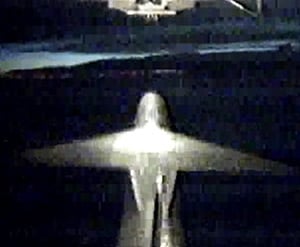This article is more than 1 year old
NASA projects IBEX heavenwards
Spacecraft prepares to sniff interstellar boundary
NASA's Interstellar Boundary Explorer mission, known to its chums as IBEX, was yesterday successfully projected heavenwards on its mission to "image and map dynamic interactions taking place in the outer solar system".
 The spacecraft was carried aloft by a Pegasus rocket released from a L-1011 aircraft (see pic) operating from Kwajalein Atoll in the Pacific. Following its separation from the rocket's third stage, IBEX "immediately began powering up components necessary to control onboard systems", and the operations team "is continuing to check out spacecraft subsystems".
The spacecraft was carried aloft by a Pegasus rocket released from a L-1011 aircraft (see pic) operating from Kwajalein Atoll in the Pacific. Following its separation from the rocket's third stage, IBEX "immediately began powering up components necessary to control onboard systems", and the operations team "is continuing to check out spacecraft subsystems".
Mission manager Greg Frazier said: "After a 45-day orbit raising and spacecraft checkout period, the spacecraft will start its exciting science mission."
That mission is to sniff the interstellar boundary beyond our heliosphere's termination shock - a region where "the hot solar wind slams into the cold expanse of space", as NASA previously put it. The agency's latest press release elaborates lyrically: "Just as an impressionist artist makes an image from countless tiny strokes of paint, IBEX will build an image of the outer boundary of the solar system from impacts on the spacecraft by high-speed particles called energetic neutral atoms (ENAs). These particles are created in the boundary region when the 1-million mph solar wind blows out in all directions from the sun and plows into the gas of interstellar space."
IBEX Principal Investigator David McComas chipped in with: "No one has seen an image of the interaction at the edge of our solar system where the solar wind collides with interstellar space. We know we're going to be surprised. It's a little like getting the first weather satellite images. Prior to that, you had to infer the global weather patterns from a limited number of local weather stations. But with the weather satellite images, you could see the hurricanes forming and the fronts developing and moving across the country."
IBEX will operate for a nominal two years from an altitude of 200,000 miles (322,00km) at apogee, using a pair of single-pixel “cameras” (IBEX-Lo IBEX-Hi) to detect ENAs with energies of 10 eV to 2 keV and 300 eV to 6 keV, respectively. NASA has a mission factsheet here (pdf). ®
